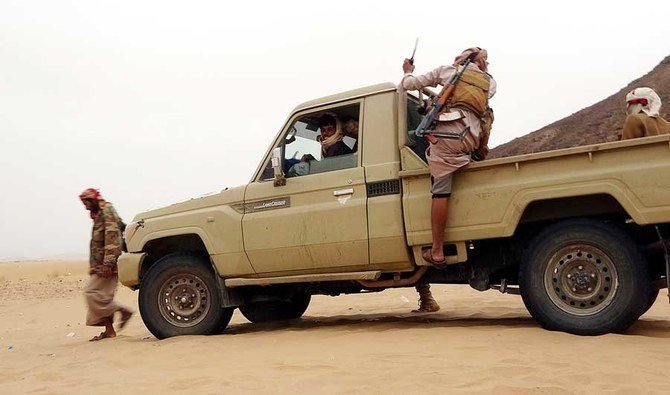SANAA: The UN has called for a halt to fighting in a district of Yemen’s oil-rich Marib province that pits government forces supported by the Arab coalition against Iran-backed Houthi rebels.
Marib, Shabwa and Al-Bayda provinces have all seen an escalation in fighting in recent weeks, resulting in “a devastating impact on civilians,” according to David Gressly, the UN’s humanitarian coordinator for Yemen.
The security situation has been particularly difficult in Marib’s Abedia district, where the UN says the movement of aid and some 35,000 people has been “extremely restricted,” including for 17,000 “extremely vulnerable” people who found refuge there from conflict in other areas of Yemen.
“I call on all parties involved in the fighting to agree now to a cessation of hostilities for Abedia district to allow for the safe passage of civilians and aid workers, and for the evacuation of all of those wounded in the fighting,” Gressly said in a statement.
The fighting in Marib — where the Houthis are battling to seize the provincial capital Marib city, the government’s last stronghold in northern Yemen — displaced some 10,000 people in September alone, the highest monthly figure so far this year.
Abedia is about 100 km from Marib city, which had between 20,000 and 30,000 inhabitants before the war, but has seen its population swell to hundreds of thousands by Yemenis displaced from earlier front lines.
With about 139 refugee camps in Marib province, according to the government, hosting around 2.2 million people, many displaced civilians have become caught in the line of fire once again.
The Houthis began a big push to seize Marib in February and, after a lull, they renewed their campaign in September, prompting intense air bombardment from the coalition.
The coalition entered the war in 2015, after the Houthis captured the capital Sanaa the previous year.
SANAA: The UN has called for a halt to fighting in a district of Yemen’s oil-rich Marib province that pits government forces supported by the Arab coalition against Iran-backed Houthi rebels.
Marib, Shabwa and Al-Bayda provinces have all seen an escalation in fighting in recent weeks, resulting in “a devastating impact on civilians,” according to David Gressly, the UN’s humanitarian coordinator for Yemen.
The security situation has been particularly difficult in Marib’s Abedia district, where the UN says the movement of aid and some 35,000 people has been “extremely restricted,” including for 17,000 “extremely vulnerable” people who found refuge there from conflict in other areas of Yemen.
“I call on all parties involved in the fighting to agree now to a cessation of hostilities for Abedia district to allow for the safe passage of civilians and aid workers, and for the evacuation of all of those wounded in the fighting,” Gressly said in a statement.
The fighting in Marib — where the Houthis are battling to seize the provincial capital Marib city, the government’s last stronghold in northern Yemen — displaced some 10,000 people in September alone, the highest monthly figure so far this year.
Abedia is about 100 km from Marib city, which had between 20,000 and 30,000 inhabitants before the war, but has seen its population swell to hundreds of thousands by Yemenis displaced from earlier front lines.
With about 139 refugee camps in Marib province, according to the government, hosting around 2.2 million people, many displaced civilians have become caught in the line of fire once again.
The Houthis began a big push to seize Marib in February and, after a lull, they renewed their campaign in September, prompting intense air bombardment from the coalition.
The coalition entered the war in 2015, after the Houthis captured the capital Sanaa the previous year.

